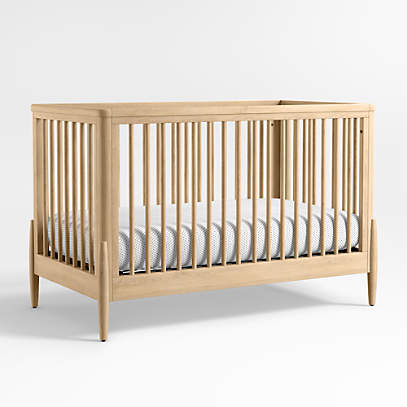
Baby Cribs: A Comprehensive Guide for Parents
Introduction
The arrival of a new baby brings immense joy and excitement, but it also presents parents with a myriad of decisions, including the selection of a baby crib. This essential piece of furniture will provide a safe and comfortable sleeping environment for your little one during their formative years. With a wide range of options available, choosing the right crib can be a daunting task. This comprehensive guide will provide you with all the necessary information to make an informed decision that meets your baby’s needs and your family’s preferences.
Types of Baby Cribs
Standard Cribs:
Standard cribs are the most common type of crib and are designed to accommodate infants from birth to around 3 years of age. They typically have fixed sides and a mattress that is adjustable to different heights. Standard cribs are available in a variety of styles and finishes to complement any nursery décor.
Convertible Cribs:
Convertible cribs offer versatility and longevity. They can be converted into a toddler bed, daybed, or even a full-size bed as your child grows. This type of crib is a great investment as it can be used for multiple stages of your child’s life.
Mini Cribs:
Mini cribs are smaller than standard cribs and are ideal for small spaces or for parents who want to keep their baby close to their bed. They are suitable for newborns and infants up to around 6 months of age.
Portable Cribs:
Portable cribs are lightweight and easy to fold, making them perfect for travel or for use in multiple rooms of the house. They are typically smaller than standard cribs and may not have all the features of a full-size crib.
Materials
Wood:
Wood is a durable and classic material for baby cribs. It is available in a variety of finishes, including natural, painted, and stained. Wood cribs are sturdy and can withstand years of use.
Metal:
Metal cribs are lightweight and easy to clean. They are also durable and can be painted or powder-coated in a variety of colors. Metal cribs are a good choice for parents who want a modern or industrial look.
Plastic:
Plastic cribs are lightweight and affordable. They are easy to clean and can be molded into various shapes and designs. However, plastic cribs may not be as durable as wood or metal cribs.
Features
Adjustable Mattress Height:
Most cribs have adjustable mattress heights to accommodate your baby’s growth. This feature allows you to lower the mattress as your baby gets older and becomes more active.
Drop-Side Rails:
Drop-side rails make it easy to access your baby in the crib. They can be lowered with one hand, allowing you to pick up or put down your baby without having to climb over the crib.
Storage Drawers:
Some cribs come with built-in storage drawers underneath the mattress. These drawers are perfect for storing baby clothes, blankets, and other essentials.
Safety Considerations
ASTM Standards:
All baby cribs sold in the United States must meet the safety standards set by the American Society for Testing and Materials (ASTM). These standards ensure that cribs are safe for infants and toddlers.
Slat Spacing:
The slats on the sides of the crib should be no more than 2 3/8 inches apart to prevent your baby’s head from getting stuck.
Mattress Fit:
The mattress should fit snugly inside the crib to prevent gaps that could pose a suffocation hazard.
Corner Posts:
The corner posts of the crib should be no higher than 1/16 inch above the mattress support to prevent your baby from climbing out.
Choosing the Right Crib
When choosing a baby crib, consider the following factors:
Size:
Choose a crib that is appropriate for the size of your nursery and your baby’s needs. Standard cribs are typically 28 inches wide by 52 inches long, while mini cribs are smaller.
Style:
Select a crib that complements the décor of your nursery. Cribs are available in a variety of styles, from traditional to modern.
Features:
Decide which features are important to you, such as adjustable mattress height, drop-side rails, or storage drawers.
Safety:
Ensure that the crib meets all ASTM safety standards and has no potential hazards.
Budget:
Baby cribs can range in price from a few hundred dollars to over a thousand dollars. Set a budget before you start shopping to narrow down your options.
Conclusion
Choosing the right baby crib is an important decision that will impact your child’s sleep and safety for years to come. By considering the different types, materials, features, and safety considerations outlined in this guide, you can make an informed choice that meets your family’s needs and provides your little one with a comfortable and secure sleeping environment. Remember to prioritize safety above all else and to consult with your pediatrician if you have any questions or concerns.
